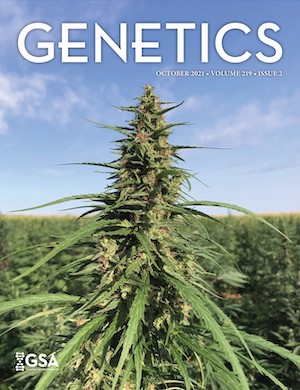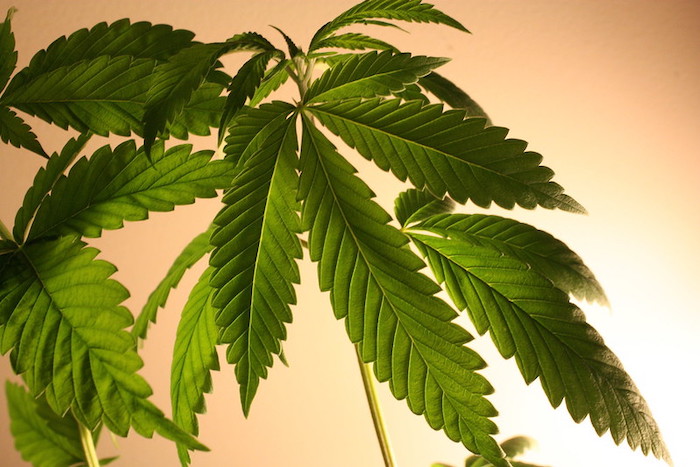Researchers identified dozens of quantitative trait loci controlling important traits in Cannabis sativa.
In 2014, United States federal law changed to allow scientific research on Cannabis sativa in states with regulated hemp programs. This legal shift opened the door to research that had previously been slow and difficult due to regulatory hurdles and funding challenges.
A new study published in GENETICS capitalized on this new opportunity and identified 69 quantitative trait loci (QTLs) that are responsible for variation in key agronomic and biochemical traits in C. sativa. This research is a step towards understanding the genetic control of complex traits in hemp and will inform future investigations into the overall evolution and function of complex traits across multiple species.

Hemp is grown for a wide range of commercial uses, including in building materials, textiles, and composite plastics, food and drink, animal feed, and pharmaceutical cannabinoid products, says study leader John McKay of Colorado State University. “It’s important to understand the genes controlling this plant as a crop, and it’s also interesting from a fundamental evolutionary standpoint.”
Identifying QTLs in a non-model species
“Scientists have previously made progress in identifying the genetic basis of complex traits in model and crop species—our team wanted to ask those questions in C. sativa because it’s an understudied species,” says McKay.
Today’s genome sequencing and assembly technologies are largely species-agnostic. As a result, scientists can now take bioinformatic and statistical genetic tools that were initially developed and tested in fruit flies and Arabidopsis and increasingly apply them to non-model species.
McKay and his team developed an F2 hemp population by crossing two phenotypically distinct varieties—a tall, late-flowering cultivar bred for fiber production and a shorter, early maturing hemp that was bred for both fiber and grain crops. They then used whole genome sequencing to map QTLs associated with traits of interest, such as grain yield and stem biomass, along with 17 biochemical traits. These included levels of cannabidiol and terpenes, which have medical uses, and THC, which is the psychoactive component of marijuana. THC is strictly regulated in the US, and THC levels in industrial hemp must be below 0.3% to remain legal crops.
Most QTLs they identified clustered into one of four genomic regions, suggesting that much of the difference between the two varieties is due to a small number of genes that have large pleiotropic effects. Two candidate genes emerged that may underlie some of these clusters: the homolog of an Arabidopsis transcription factor gene called TINY may be associated with a cluster of agronomic traits, and the gene for olivetol synthase appears to underlie variation in a cluster of biochemical traits, consistent with the enzyme’s role in cannabinoid synthesis. The researchers functionally validated the olivetol synthase candidate by expressing the two hemp alleles in yeast. They found that the allele from the low-cannabinoid cultivar produced less olivetol in the yeast expression system, supporting the hypothesis that allelic variation at this gene plays a role in the observed phenotypic variation.
The researchers also observed epistatic interactions between some of the QTL clusters, further complicating attempts to elucidate any one trait’s exact genetic underpinnings.
“This study definitely adds to the broader conversation about complex traits,” says McKay. “For example, everyone agrees epistasis exists, but breeders and geneticists like to argue about whether it’s important to include in prediction models. Documenting additional cases like this in which epistasis contributes to variation adds to our understanding of the basis of complex traits.”
Traits are complicated but still predictable
The results of this latest study contradict a paper from 2003 that concluded that variation in cannabinoid production is controlled by a single genetic locus. The team from Colorado State University identified at least four loci controlling variation in these chemotypes.
“The field of genetics has always been a friendly place to hypothesize that something—anything—is polygenic,” laughs McKay. “Finding multiple loci controlling a single biochemical trait wasn’t surprising to me, because the abundance of any molecule can be influenced not only by the pathway that makes that molecule but also the ones that influence the cells and machinery that contribute to the process.”
However, despite overturning assumptions of one-to-one genotype-phenotype interactions, McKay emphasizes that he still views the hemp traits in the study as predictable. Future grants would allow research groups like his to dive deeper into the adaptive value of cannabinoids in hemp plants and create more precise genetic manipulations of key traits of interest. Researchers are eager to see policy informed by scientific understanding of the factors that predictably affect cannabinoid content and other traits in hemp crops.
CITATION:
Quantitative Trait Loci Controlling Agronomic and Biochemical Traits in Cannabis sativa
Patrick Woods, Brian J. Campbell, Timothy J. Nicodemus, Edgar B. Cahoon, Jack L. Mullen, and John K. McKay
GENETICS 2021; iyab099
https://doi.org/10.1093/genetics/iyab099































